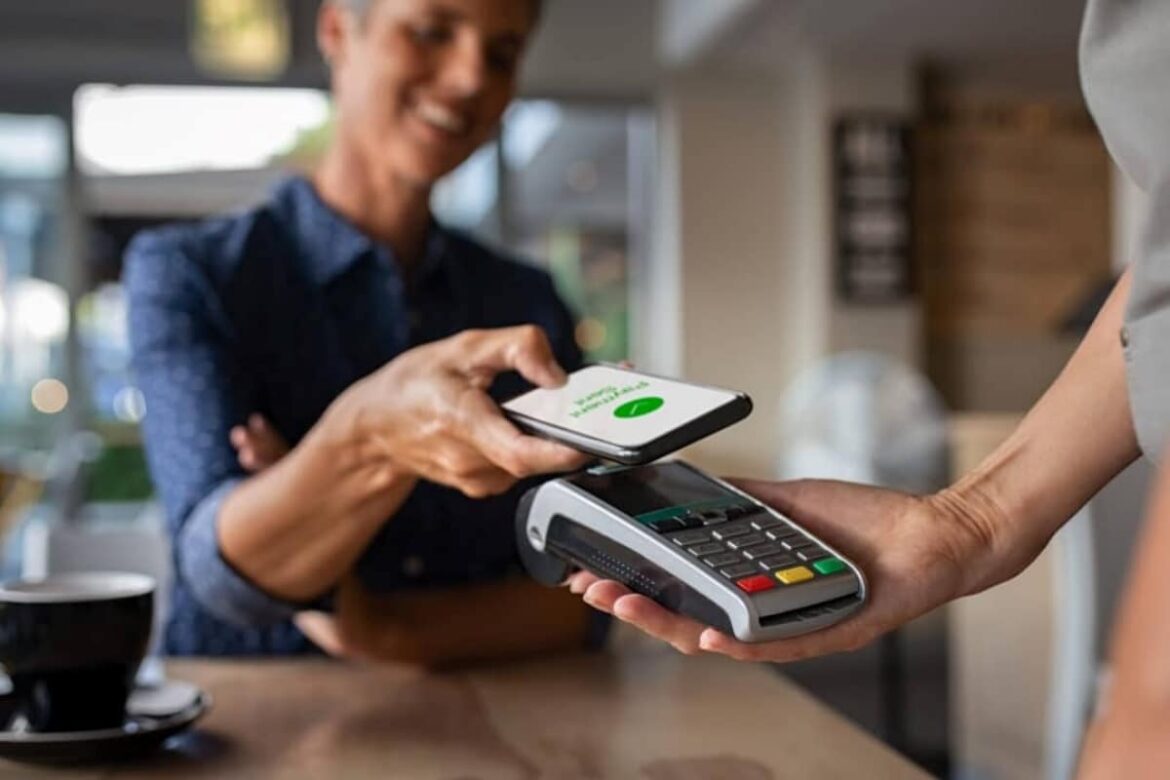711
NFC is the abbreviation for “Near Field Communication”. The term is usually used in connection with smartphones, as NFC allows you to make secure contactless payments
NFC enables contactless payment
As the term near-field communication suggests, this payment method relies primarily on the devices used for the transaction being close to each other.
- NFC is a radio standard for wireless data transmission. The three letters stand for “Near Field Communication”, i.e. communication between two elements that are close to each other.
- The special feature of NFC is that both devices must be held a few centimetres apart for transmission to take place.
- This in turn results in the biggest advantage of NFC: it is extremely secure against eavesdropping from outside. After all, potential perpetrators would have to get very close to you in order to spy on your data
- The transmission speed of 424 kBit/s is lower than that of Bluetooth, but is still sufficient to send small amounts of data such as Internet links in fractions of a second.
- NFC therefore offers a fast, simple and relatively secure way of transferring data with a cell phone without taking a major security risk, as can be the case with alternatives.
Fields of application for Near Field Communication
NFC is used to transmit data over short distances. In addition, the payment method is particularly suitable for settling relatively small amounts and is therefore used in the area of micropayments. There are also some establishments in Germany that offer this function.
- Many supermarkets such as Lidl, Aldi or Rewe offer a payment service via NFC. The smartphone or an NFC-enabled credit card then only needs to be held up to the terminal to pay the amount. This works very securely and even faster than conventional methods. NFC is also frequently used in ticket machines
- NFC is also widely used for data exchange between smartphones or tablets. For example, if you hold two Android devices with an NFC chip together, you can transfer data with one click – for example links, contact details or even photos.
- Information transfer with NFC tags: It is also possible to insert small NFC tags into advertising posters, which can then be used to transfer information such as the appropriate calendar entry or a link to a website.
- At some colleges and universities, students can use the NFC chips in their ID cards to pay small amounts of money.
How do NFC tags work?
NFC technology is an offshoot of RFID technology. NFC tags are basically RFID tags. The only difference is that the frequency is fixed.
- RFID stands for “radio-frequency identification”. A distinction can be made between active and passive RFID transponders
- The passive RFID transponder is the best known. To interact with it, a reader emits an electromagnetic field. The RFID chip absorbs the transmitted energy via an antenna and can thus implement the commands received. When an RFID tag is read, the transmitter’s electromagnetic field is weakened or the modulated signal is reflected in antiphase, allowing the reader to view the stored information.
- Active RFID transponders usually have their own power supply: The range is significantly greater in this case.
- Classic (passive) RFID transponders, which can also be found on clothes in department stores, have an antenna that resonates at 125 kHz. However, other designs with different frequencies are also possible. NFC tags are usually only designed for 13.56 MHz. You can also read and write to them with most smartphones
- However, RFID transponders do not offer 100% security: numerous devices can be found on the Internet that can be used to make a copy of a scanned RFID tag. However, with classic passive RFID chips, the copying device must be very close to the chip: Undetected data theft is generally not possible.
